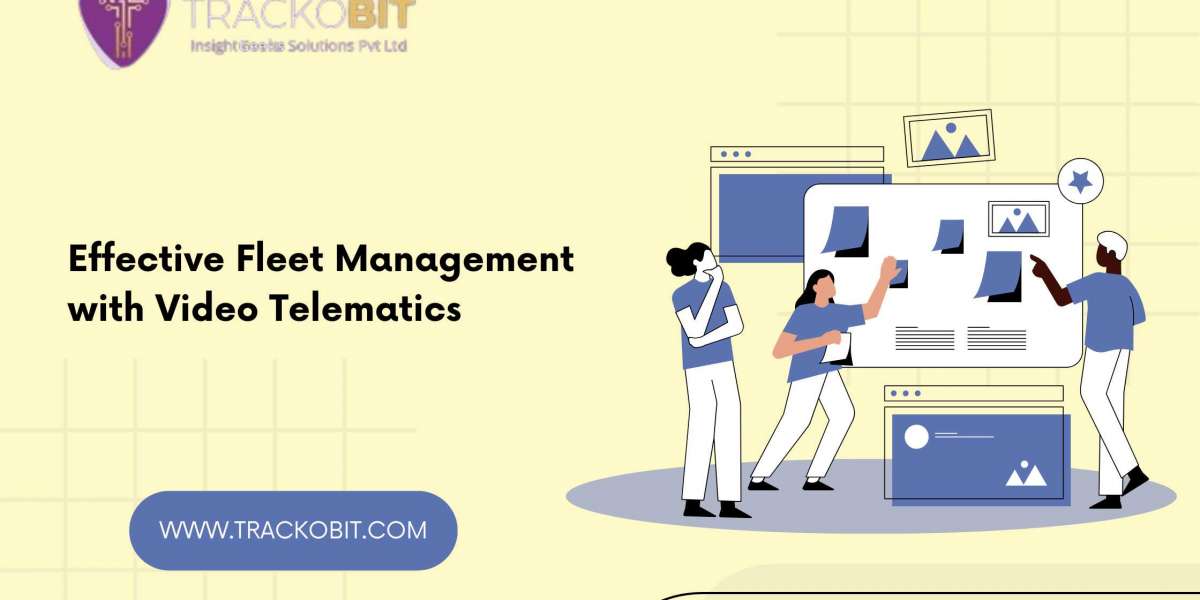Video telematics is a unique, advanced, and effective way of transmitting truck live data to protect drivers and perform better. The telematics technology also includes video recording as well as telematics data. Rather than just the driver's live road view, video telematics software keeps track of other environmental conditions or the general location, speed of the vehicle, and the total distance of the road trip. While video data can be used to track the road and telematics data can be used to provide advice, these data together give a more complete picture for fleet managers. The implementation of this brand new technology will give the fleet a new level of safety and security.
What is Video Telematics?
Video telematics links video equipment with traditional vehicle tracking to enhance fleet control measures. Video telematics allows users to record video while collecting and studying data as it happens. You can monitor your entire vehicle fleet using dash cams that connect live video and alerts to a control center.
- Sensors: The units mounted in the vehicle to read certain parameters like position (using GPS), speed, fuel consumption, and even diagnostic information about the engine and driver’s behavior.
- Telecommunication: These networks transmit all the collected information using some telecommunication network to a centralized server/point. This will be done on either a cellular/Satellite platform, or any other wireless technology basis.
- Software Systems: All the units that collect such data will, at some point, transform it into useful information. Typically, it will issue data driven alerts to managers.
Features of Telematics Software
Live Video Streaming: A video Telematics system lets managers look at what drivers see during their normal driving actions. Real-time camera monitoring helps managers view how their drivers behave while understanding current situations.
Event Recording: When the vehicle makes sharp brake actions or quick pedal hits and detects crashes it records data automatically. The recorded video data lets teams understand incident reasons and respond properly.
Driver Behavior Monitoring: Recording system shows managers adverse driving actions people take while driving at work to train staff on improved practices.
Dash Cameras: Video telematics starts with dashboard cameras mounted in vehicles. The cameras on these systems record both road and driver video data to support accident investigations.
Event-Triggered Recording: Video telematics systems detect vital driving actions by recording when drivers brake harshly, speed up suddenly, and steer quickly. These cameras help show what led to possible danger at specific times.
Cloud Storage: The documents are safely saved in cloud technology so viewing requires no specific location.
AI Integration: Advanced systems can detect information from video feeds by using artificial intelligence. When AI spots driver distraction or tiredness it tells drivers they need to pay attention to the road again.
Enhanced Analytics: The software builds stronger fleet strategies through automatic reporting on driver habits and fuel consumption data plus vehicle activity measurements.
Remote Coaching: Managers can use the live feed to directly help drivers adjust their driving behavior while driving. Also, a driver app is where drivers can have their schedules for the day, trip management, and much more. On the same app, even managers can communicate with them if necessary. So, all the work related updates will be available on the driver app for drivers.
GPS Fleet Tracking Solutions Can Help Fleet
GPS tracking software gives users data about vehicle health while showing how drivers handle routes to help improve overall business operations. It combines with video telematics systems and provides much more to the fleet.
Monitoring and Alerts: The system tracks drivers through GPS to detect speeding, hard braking and route changes while notifying users about better ways to drive safely.
Emergency Response: As soon as problems occur with a vehicle, GPS tracking sends the actual location directly to emergency teams so they can act faster.
Geofencing: Users can set up virtual boundaries. GPS tracking system sends alerts to both protect against theft and to monitor when vehicles move outside of their permitted locations.
Driver Behavior Monitoring: Telematics systems such as TB Track lite oversee driver behaviors by measuring vehicle operations including brake use acceleration and speed patterns. By tracking driver behavior this information helps develop safer driving practices to protect roads from accidents.
Fuel Management: GPS software tracks fuel usage to show areas where vehicles use fuel inefficiently and makes suggestions to help users save money through improved routes and cut down idle times.
Compliance and Reporting: Telematics solutions automatically create Hours of Service (HOS) reports that businesses need to obey their regulatory requirements.
Before You Go!
Fleet operations become easier to monitor when businesses use video sensors and location tracking technology. With these features companies can better protect their drivers and decrease waste while making their fleet run better. These technologies let fleets operate better and smarter by delivering important data and automated systems.
Trackobit’s GPS Fleet Tracking Solutions works to improve your fleet operations by delivering safety enhancements and productivity gains plus managing operational costs at their best. Their Video Telematics Solutions use dashcam and IoT sensor technology to help your fleet.







